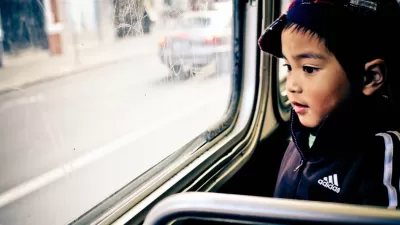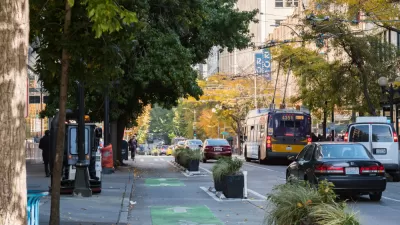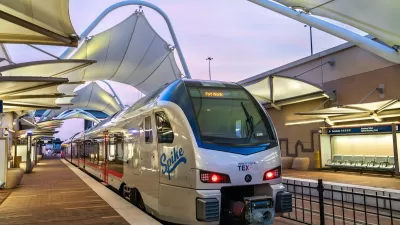Public transport is overall very safe (low crash rate) and secure (low crime rate). However, experts seldom promote transit as a traffic safety strategy, and advocates seldom emphasize safety as a transit benefit. It's time for a new narrative.

Research described in a new article published in the Journal of Public Transportation, "A New Transit Safety Narrative," indicates that increased transit travel and more transit-oriented development can provide significant traffic safety and crime reduction benefits. These benefits are potentially large, but generally overlooked by safety experts and transit advocates.
Transit travel has less than a tenth the crash casualty rate as automobile travel, and transit-oriented development residents experience less than a fifth of the traffic casualty rate, per capita, as automobile-oriented communities. In addition, per capita crime rates tend to be lower in more compact, mixed, transit-oriented neighborhoods, and all else being equal, tend to be lower in more transit-oriented cities than in automobile-dependent cities. This research supports Jane Jacob's hypothesis that more compact, mixed development tends to reduce crime by increasing passive surveillance ("eyes on the street") by responsible (non-criminal) people who live, work, and walk in an area.
Despite these benefits, many people fear transit, experts seldom promote transit as a traffic safety strategy, and transit advocates seldom emphasize safety as a significant benefit of pro-transit policies. Various factors contribute to the under-appreciation of transit safety benefits including the nature of transit travel, dramatic news coverage of transit crashes and crimes, transit agency messages that unintentionally emphasize risks without providing information on its overall safety, and biased traffic safety analysis.
There is significant potential for changing perceptions. We now have credible evidence that public transit is relatively safe and secure, and pro-transit policies can further reduce risks. Planning is becoming more multi-modal and there is increasing recognition that pro-transit policies are justified to achieve various planning objectives. There is growing demand for transit travel and transit-oriented development. A few traffic safety programs already recognize the safety benefits of pro-transit policies. This suggests that many people may be receptive to new messages about transit safety benefits.
Transportation professionals can create a new, more accurate and positive transit safety narrative which emphasizes that transit is overall very safe, communicates the safety impacts of pro-transit policies, addresses common misperceptions about transit risks, and provides practical guidance on how to further reduce transit risks. Although rational arguments alone may not change everybody’s beliefs about transit safety, such information should be part of overall marketing programs that help reposition transit as an efficient, attractive, enjoyable and prestigious form of travel that benefits people and communities.
FULL STORY: A New Transit Safety Narrative

Planetizen Federal Action Tracker
A weekly monitor of how Trump’s orders and actions are impacting planners and planning in America.

Map: Where Senate Republicans Want to Sell Your Public Lands
For public land advocates, the Senate Republicans’ proposal to sell millions of acres of public land in the West is “the biggest fight of their careers.”

Restaurant Patios Were a Pandemic Win — Why Were They so Hard to Keep?
Social distancing requirements and changes in travel patterns prompted cities to pilot new uses for street and sidewalk space. Then it got complicated.

DC Area County Eliminates Bus Fares
Montgomery County joins a growing trend of making transit free.

Platform Pilsner: Vancouver Transit Agency Releases... a Beer?
TransLink will receive a portion of every sale of the four-pack.

Toronto Weighs Cheaper Transit, Parking Hikes for Major Events
Special event rates would take effect during large festivals, sports games and concerts to ‘discourage driving, manage congestion and free up space for transit.”
Urban Design for Planners 1: Software Tools
This six-course series explores essential urban design concepts using open source software and equips planners with the tools they need to participate fully in the urban design process.
Planning for Universal Design
Learn the tools for implementing Universal Design in planning regulations.
Heyer Gruel & Associates PA
JM Goldson LLC
Custer County Colorado
City of Camden Redevelopment Agency
City of Astoria
Transportation Research & Education Center (TREC) at Portland State University
Camden Redevelopment Agency
City of Claremont
Municipality of Princeton (NJ)





























